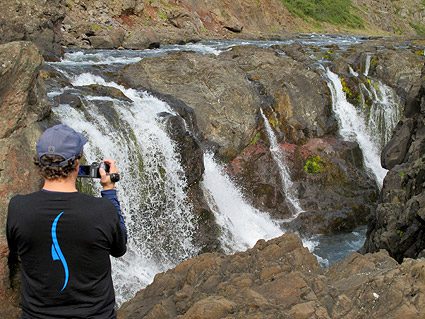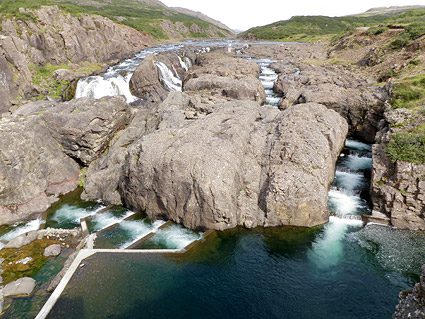Friday September 3, 2010

Despite their beauty, waterfalls can act as barriers to anadromous fishes, like salmon, that migrate upriver to spawn. The recent eruption of Eyjafjallajökull reminds us that Iceland, located over the Mid-Atlantic Ridge, remains geologically active. Due to the geology of the region, many of the rivers flow over waterfalls forming natural fish barriers. Iceland has almost 250 rivers and roughly 60 are used by Atlantic salmon. As with many European nations, adjacent property owners have rights to the majority of Icelandic rivers. The landowners are required by the government to form fishing associations that are responsible for managing and protecting the habitat, and that share the income derived from fishing access.

Nearly 600 miles of river habitat would have been off-limits to migratory fish had the people of Iceland not recognized the advantage of opening up fish habitat to create angling opportunities. Fish ladders have been constructed around many natural fish barriers and now provide access to 27% of the existing 2,175 miles of migratory fish habitat. The fish bypasses have been effective in increasing fishing opportunities and improving productivity of salmon. For example, only about a quarter-mile of the Langa River, meaning long river, was historically accessibly to salmon (photo above). Now, the river has gained 14 miles of salmon habitat and maintains an average annual catch of 1,407 salmon.
Photo source: FISHBIO
